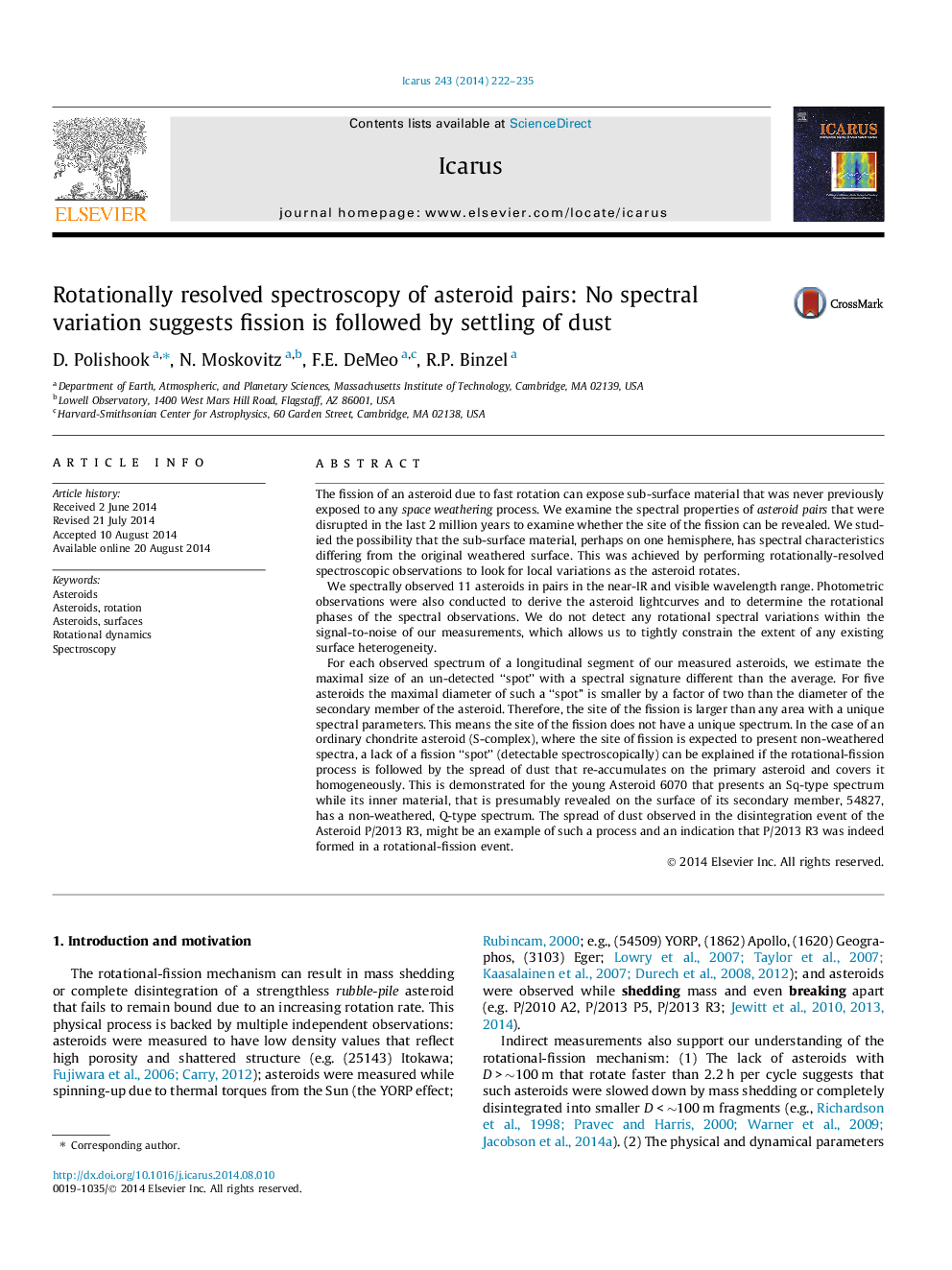| Article ID | Journal | Published Year | Pages | File Type |
|---|---|---|---|---|
| 1773095 | Icarus | 2014 | 14 Pages |
Abstract
For each observed spectrum of a longitudinal segment of our measured asteroids, we estimate the maximal size of an un-detected “spot” with a spectral signature different than the average. For five asteroids the maximal diameter of such a “spot” is smaller by a factor of two than the diameter of the secondary member of the asteroid. Therefore, the site of the fission is larger than any area with a unique spectral parameters. This means the site of the fission does not have a unique spectrum. In the case of an ordinary chondrite asteroid (S-complex), where the site of fission is expected to present non-weathered spectra, a lack of a fission “spot” (detectable spectroscopically) can be explained if the rotational-fission process is followed by the spread of dust that re-accumulates on the primary asteroid and covers it homogeneously. This is demonstrated for the young Asteroid 6070 that presents an Sq-type spectrum while its inner material, that is presumably revealed on the surface of its secondary member, 54827, has a non-weathered, Q-type spectrum. The spread of dust observed in the disintegration event of the Asteroid P/2013 R3, might be an example of such a process and an indication that P/2013 R3 was indeed formed in a rotational-fission event.
Related Topics
Physical Sciences and Engineering
Earth and Planetary Sciences
Space and Planetary Science
Authors
D. Polishook, N. Moskovitz, F.E. DeMeo, R.P. Binzel,
